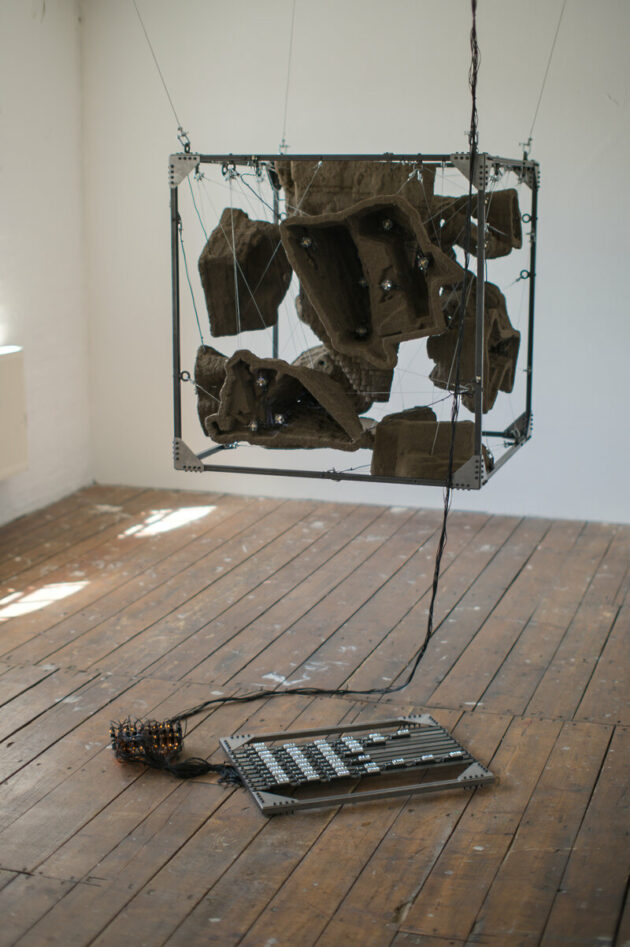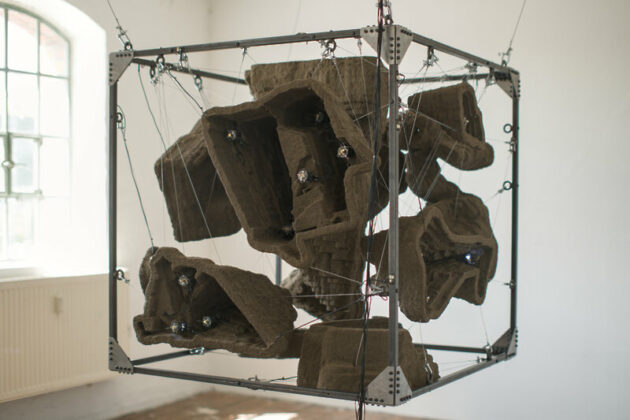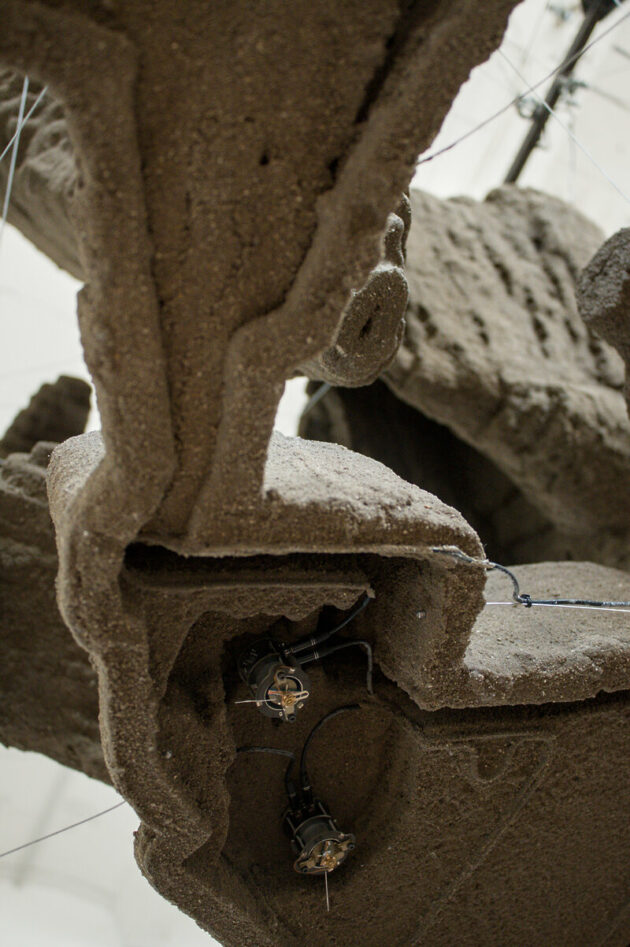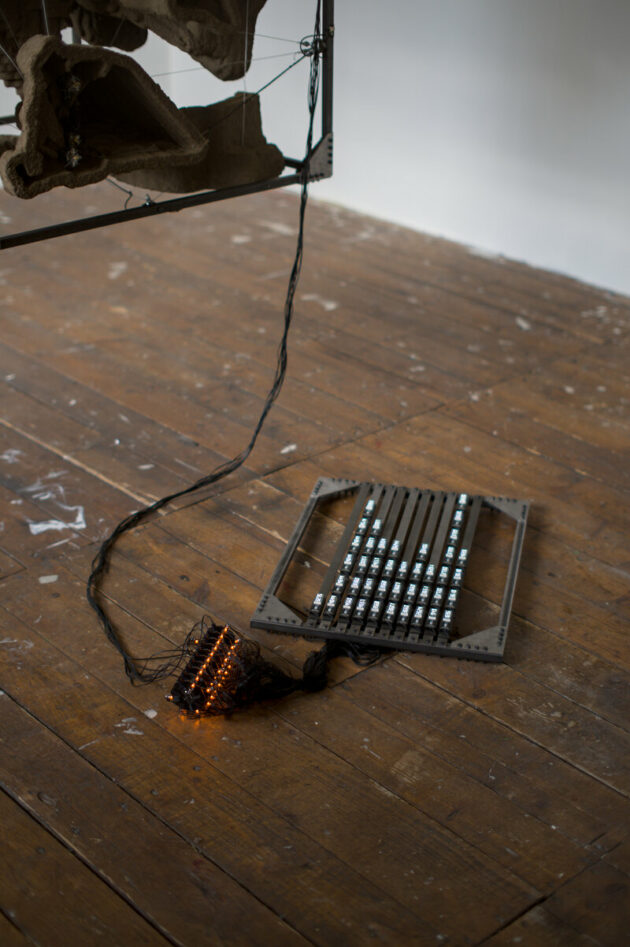61.4223

61.4223 offers a possibility of experiencing the moment of contemplative observation of transformed landscape. The sculptures of an open pit are perceived as aesthetic objects in an environment of technical influence and presence; the moment of contemplation of the aesthetic object, originally of instantaneous quality, is disturbed by the presence of linear, technical time. Increasingly, the influence of technological narrative on aesthetic judgment becomes apparent.

Inside a 1m³ cube there are sculptures of the ten active German open pit mines. In them, the hole becomes visible from the inside as nothing-within-something, from the outside as something-out-of-nothing. 41 machines represent the active bucket-wheel excavators. With their arms they perform the movement next to whose traces even the mighty excavator can be overlooked from a distance: swinging; here it appears to be an aesthetic purpose in itself.
A light flash from the individual machines indicates the moment in which the real-world counterpart moves a cubic meter of earth. 61.4223 moments per second, in which the volume of the viewed cube is moved; moments of viewing an increasingly disappearing space.


Progress and growth are present even in the non-meaningful space of contemplative observation. Displays next to the cube allow the viewer to track exactly how many cubic meters have been moved since the installation started. The entire cube no longer seems to merely make use of machine aesthetics but, like the open pit mines themselves, to be a technological artifact. Aesthetic perception is no longer possible without technological influence.


Parallel to the artistic work, a theoretical examination of the influence of the relationship to technology on the judgment of aesthetic perception of nature was developed under the title Landschaftstransformation im technologischen Wirkungsprozess. The artistic work uses thoughts and insights of the theory, but exists independently as a primarily aesthetic experiment in the same thematic field. It offers itself as a visual object of one of the forms of the influence on the aesthetic judgment considered in the theoretical work.
I propose that technology and the machine as artifact are subject to the systematics of Marx’s fetish; efficiency and thus the capacity to create profit out of supposed nothingness are being naturalized into them. Technomass becomes an index of capital accumulation and follows the logic and interest of capital in its distribution and multiplication. Technological actions are guided by causality; in nature that is handled by them, a memory of transformation (Transformationsgedächtnis) is created inside the landscape that makes past and potentially fading possibilities of aesthetic perception (Vergangene Atmosphären) of nature (Seel) tangible and, through the thus dwindling freedom of nature, leads to a negative aesthetic judgment, an opposition to technological treatment of nature. To prevent this, the effect of technology uses a long history of appropriating nature, formulated as a promise of eternal growth and progress, to ensure a participation of the people underlying the labor that is performed. As a site of extreme landscape transformation and an extremely massive technological artifact, the open pit mine is a particularly suitable illustrative object of this entanglement: Once the justification/meaning of the open pit mine ends, it appears to be ugly. It is renaturalized in order to conceal the consequences of the technological treatment of nature from the aesthetic sense.

